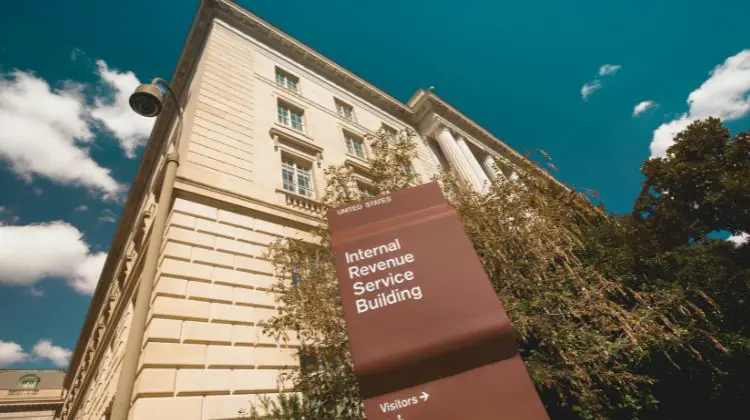Let’s face it, understanding your 401k by age can feel overwhelming. With terms like vesting periods and expense ratios, it’s easy to feel lost. But don’t worry, you’re not alone. Many people, regardless of their financial background, find 401ks confusing. Understanding how much you should have in your 401k at different ages is crucial for a secure retirement. This guide will simplify 401k savings by age and provide clear steps to help you stay on track for your retirement goals.
Table Of Contents:
- The Importance of Starting Early: 401k in Your 20s
- Leveling Up in Your 30s: Building Upon Your 401k
- Catching Up in Your 40s: 401k Considerations
- Transitioning in Your 50s and 60s: Approaching Retirement With Your 401k
- Navigating Volatility: The 401(k) and Market Fluctuations
- 401k Balance Benchmarks By Age
- Conclusion
The Importance of Starting Early: 401k in Your 20s
Your twenties are a time of exploration, career starts, and maybe even starting a family. Retirement might feel far off, but these years are the most critical for your financial future. Time is your greatest asset in investing. Thanks to compounding, even small, regular contributions can have a significant impact over time. Consider opening a savings account to help manage your finances as you start contributing to your 401k.
Building Momentum: What to Aim For
Your average salary may be lower in your twenties. Remember that consistent contributions matter more than large ones. This is because compounding helps even modest savings grow significantly. As your salary increases, increase your contributions. Don’t forget about employer matches; it’s essentially free money. Contribute enough to receive the full match if possible.
Realistic Expectations for Your 20s
A common goal is to have one times your annual salary saved in your 401k by 30. So, if you earn $50,000, try to have $50,000 in your 401(k). This creates a head start for a comfortable retirement and helps you gain control over your finances early on. This strategy will help you gain a head start in creating a substantial nest egg for retirement.
Leveling Up in Your 30s: Building Upon Your 401k
Your thirties are often about building a career, maybe buying real estate, and handling more responsibilities. Retirement still seems distant, but use this decade to build upon your 401k’s foundation. Many financial experts recommend having three times your salary saved for retirement by 40.
Boost Your Contributions as Your Income Grows
Ideally, by your mid-thirties, aim to save at least 15% of your gross income, including employer contributions. Fidelity suggests aiming for around 15%. If you can increase it to 20% or 25%, even better. It doesn’t have to mean deprivation. Instead of viewing saving as giving something up, see it as investing in your desired future.
Strategic Savings for Your Future
Set yourself up for greater financial flexibility in your thirties. This could be for early retirement, a career change, or starting a business. The median 401(k) balance for those in this age range is $91,281, according to Vanguard’s findings. Everyone is different. Consider seeking advice from a financial professional for a personalized plan.
Catching Up in Your 40s: 401k Considerations
Retirement might feel closer as you enter your forties. It’s natural to wonder if you’re saving enough. Don’t panic. Now is the time for strategic planning. Your forties are about maximizing growth potential while taking advantage of catch-up contribution opportunities. You have the knowledge and income to accelerate your savings. Think of it like this: if your 401k is a race, your forties are the final lap where you push hard to finish strong.
Maximizing Your 401k Savings: What You Can Do
You should aim for six times your salary saved by this point, according to experts. Are you wondering how much the average person has saved at this point? There’s still time to grow your nest egg significantly.
One smart move is utilizing “catch-up contributions.” Individuals age 50 and over can make these contributions. They allow additional savings beyond the annual limits, helping those nearing retirement save faster. Consult with a financial advisor or tax professional for a personalized plan. This will potentially accelerate your retirement savings and improve your finances for your later years.
Transitioning in Your 50s and 60s: Approaching Retirement With Your 401k
You may find yourself reflecting on your career and life beyond work. Some are ready to retire, while others want to start a new work chapter. Understanding how much money you need to live comfortably during retirement while protecting yourself against market downturns is crucial during this time. Don’t feel like you’re running out of time. Even if you haven’t prioritized saving consistently, ways to maximize your 401k can make your money last longer.
It’s tempting to use your 401(k) savings early for immediate financial needs. However, this could lead to penalties and taxes, leaving you with less for retirement. Try to avoid touching that money and let it benefit from compound growth. As your money grows in your 401k, the impact of disciplined investing and prioritizing savings from the beginning of your career becomes evident.
Nearing Retirement: Understanding How Your 401k Will Work For You
Let’s look at what you should aim to have saved by your fifties and sixties for a smooth transition. Experts recommend having eight times your annual income saved by age 60 and ten times your salary by age 67. Remember, these are just guidelines. Everyone is different.
Lifestyle, spending habits, and desired retirement location all play a role. Focus on the journey you want, using these guidelines as a starting point. Talk with a financial advisor to ensure you feel confident about your finances, projected expenses, and desired retirement lifestyle. Understanding 401k by age is about making a plan that aligns with your situation and goals.
Navigating Volatility: The 401(k) and Market Fluctuations
Let’s imagine your 401(k) balance dropped during a recent market downturn. Does that mean all your contributions were for nothing? No. Consistent 401(k) contributions are beneficial. According to Vanguard’s report on “How America Saves“, people were rewarded. Despite market turmoil in 2022 and rising interest rates, those who consistently contributed to their retirement accounts still saw positive results.
Staying the course during market swings positions you to benefit from rebounds. Regularly contributing to your 401(k) is like buying low and selling high. When prices drop, you purchase more shares for the same price. These price fluctuations are normal in the stock market and can present opportunities. Resist withdrawing money, no matter how tempting it may seem during volatile periods.
401k Balance Benchmarks By Age
Average 401k balances provide a general idea of progress. This is not about comparing yourself to others, as each journey is different. It can offer some perspective. Keep in mind that averages don’t tell the whole story.
| Age Range | Average 401(k) Balance | Median 401(k) Balance |
|---|---|---|
| Under 25 | $7,351 | $4,988 |
| 25-34 | $37,557 | $20,182 |
| 35-44 | $91,281 | $45,307 |
| 45-54 | $168,646 | $88,488 |
| 55-64 | $244,750 | $136,585 |
| 65 and over | $272,588 | $158,138 |
Remember, income, savings habits, employer contributions, and investment performance all impact individual 401(k) journeys.
Conclusion
The journey to a robust 401(k) starts with saving regularly and making informed decisions throughout your life. While average balances offer insights, creating a plan that considers your income and desired lifestyle is key. You can pave the way to greater financial freedom and security in retirement by understanding 401k savings by age and with knowledge and effort.








Reader Interactions